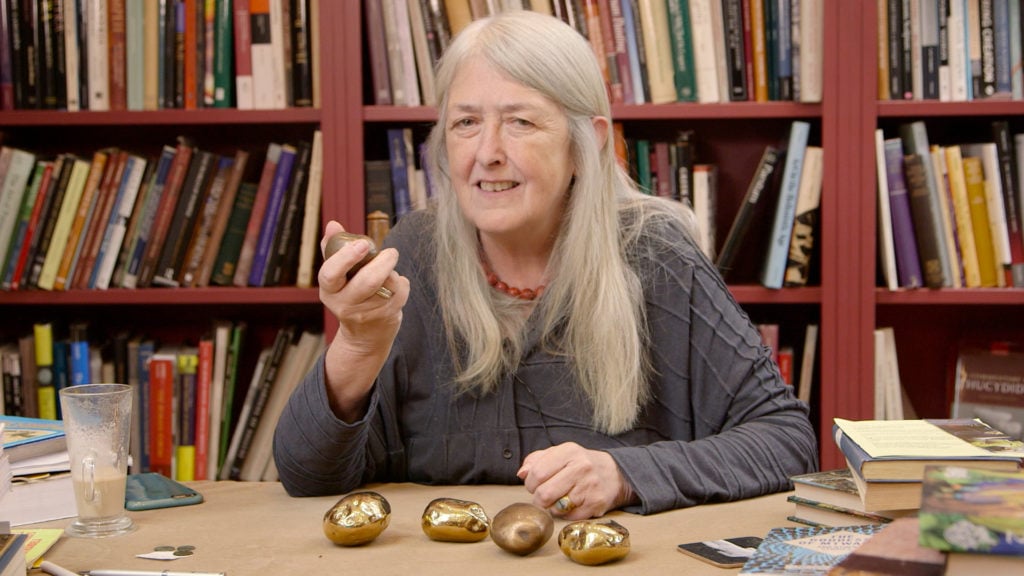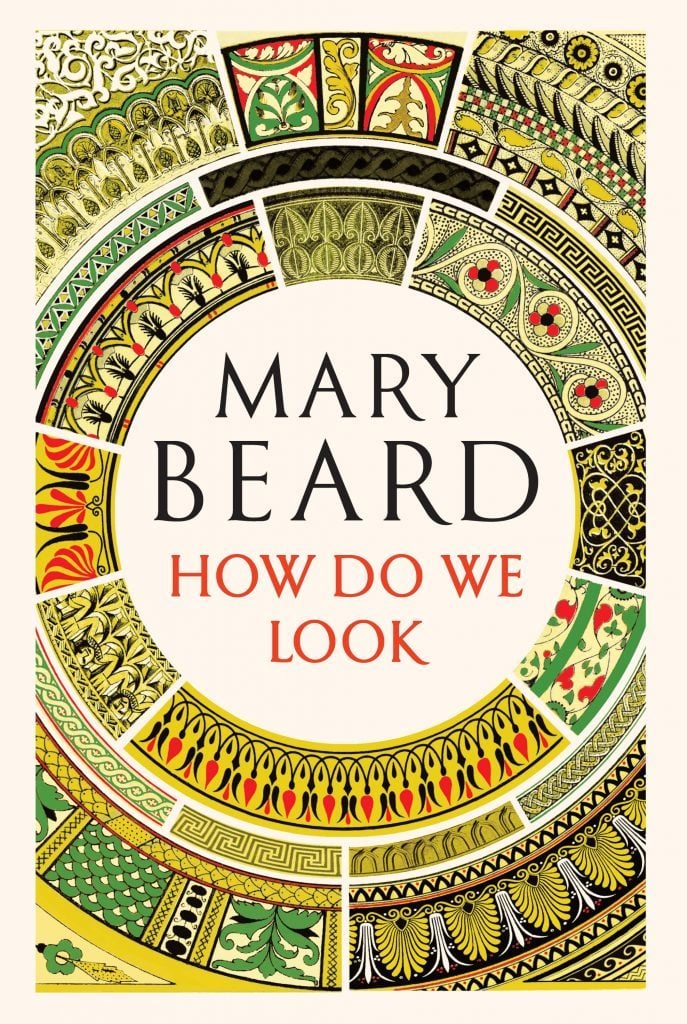Art World
Classicist Mary Beard on the Strange, Sordid History of the World’s First Nude Female Statue
An excerpt from Beard's new book 'How Do We Look.'

Greek and Roman writers repeatedly explored the idea that the finest form of art was a perfect illusion of reality; or, to put it another way, that it was the pinnacle of artistic achievement that there should be no apparent difference between the image and its prototype. The most famous anecdote along these lines concerned two rival painters of the late fifth century BCE, Zeuxis and Parrhasios, who held a competition to decide which of them was the more skilled. Zeuxis painted a bunch of grapes so realistic that the birds flew in to eat them. It was a triumph of illusion that promised to win the day. Parrhasios, however, painted a curtain—which Zeuxis, flushed with his success, demanded that he draw aside to reveal the painting beneath. According to Pliny, who recounted the incident in his encyclopedia, Zeuxis quickly realized his mistake and conceded victory, with the words: “Ideceived only the birds, Parrhasios deceived me.”
No trace of any such paintings survives, if they ever existed beyond the anecdote. But we do have evidence for a marble statue that was the subject of a similar—though far more disturbing—story. That is a sculpture made by the artist Praxiteles around 330 BCE—a work now usually known as the “Aphrodite of Knidos,” after the Greek town on the west coast of modern Turkey that was its first home. It was celebrated in the ancient world as a milestone in art, since it was the first full-sized naked statue of a female figure (technically, in this case, a goddess in human form), after centuries in which sculptures of women had, like Phrasikleia, been represented clothed. Praxiteles’s original has long been lost; one story is that it was eventually taken to Constantinople, where it was destroyed in a fire in the fifth century CE. But it was so famous that hundreds of versions and replicas of it were made across the ancient world, in full size and miniature, even appearing as the design on coins. Many of these versions have survived.

A marble sculpture of the Aphrodite of Knidos from the first century BC, made by Menophantos. National Roman Museum-Palazzo Massimo alle Terme, Rome, Italy. Photo: Eric Vandeville/akg-images.
Today it is difficult to see beyond the ubiquity of such images of the naked female form and to recapture how daring and dangerous it must have been for the original viewers in the fourth century BCE, who were certainly not used to the public display of female flesh (in some parts of the Greek world real-life women, at least among the upper class, went around veiled). Even the phrase “first female nude” underplays the impact, by implying that it was an aesthetic or stylistic development somehow waiting to happen. In fact, whatever was driving Praxiteles’s experiment (this is another “Greek Revolution” whose causes we do not fully understand), he was destroying conventional assumptions about art and gender in much the same way as Marcel Duchamp or Tracey Emin have done since: whether that is turning a urinal into an art work in the case of Duchamp, or Emin’s tent, entitled Everyone I Have Ever Slept With. It was perhaps not surprising that the Greek town of Kos, on an island off the Turkish coast—the first client to whom the artist offered his new Aphrodite—said, “No, thank you” and chose a safely clothed version instead.
But simple nakedness was only part of it. This Aphrodite was different, in a decidedly erotic way. The hands alone are a giveaway here. Are they modestly trying to cover her up? Are they pointing in the direction of what the viewer wants to see most? Or are they simply a tease? Whatever the answer, Praxiteles has established that edgy relationship between a statue of a woman and an assumed male viewer that has never been lost from the history of European art—as some ancient Greek viewers themselves were all too well aware. For it was an aspect of the sculpture dramatized in a memorable tale of a man who treated this famous goddess in marble as if she were a woman in flesh and blood. It is told in its fullest form in a curious essay written around 300 CE.
The writer reports what is almost certainly an imaginary argument among three men—a celibate, a heterosexual and a homosexual—who are having a long and tricky discussion about which kind of sex, if any, is best. In the course of this they arrive at Knidos and make for the biggest attraction in town, which is the famous statue of Aphrodite in her temple. While the heterosexual is leering at her face and front, and the man who prefers the love of boys is peering at her backside, they spot a little mark in the marble at the top of the statue’s thigh, on the inside near her buttocks.
As something of an art connoisseur, the celibate starts to sing the praises of Praxiteles who had managed to hide what must have been a blemish in the marble in such an inconspicuous place—but the lady custodian of the temple interrupts him to say that something much more sinister lay behind the mark. She explains that a young man had once fallen passionately in love with the statue and managed to get locked in with her all night; and that the little stain is the only surviving trace of his lust. The heterosexual and the homosexual both gleefully claim that this proves their point (the one observing that even a woman in stone could arouse passion, the other that the location of the stain shows that she had been taken from behind, like a boy). But the custodian insists on the tragic sequel: the young man went mad and threw himself off a cliff.
There are several uncomfortable lessons inscribed in this story. It is a reminder of how troubling some of the implications of the Greek Revolution could be, how seductive to blur the boundary between life-like marble and real-life flesh, and at the same time how dangerous and foolish. It shows how a female statue can drive a man mad but also how art can act as an alibi for what was—let’s face it—rape. Don’t forget, Aphrodite never consented.

Cover of Mary Beard’s How Do We Look: The Body, the Divine, and the Question of Civilization (2018). Courtesy of WW Norton & Co Inc.
Reprinted from How Do We Look by Mary Beard. Copyrights © 2018 by Mary Beard Publications, Ltd. First American Edition 2018. Used with permission of the publisher, Liveright Publishing Corporation, a division of W.W. Norton & Company, Inc. All rights reserved.
沒有留言:
張貼留言